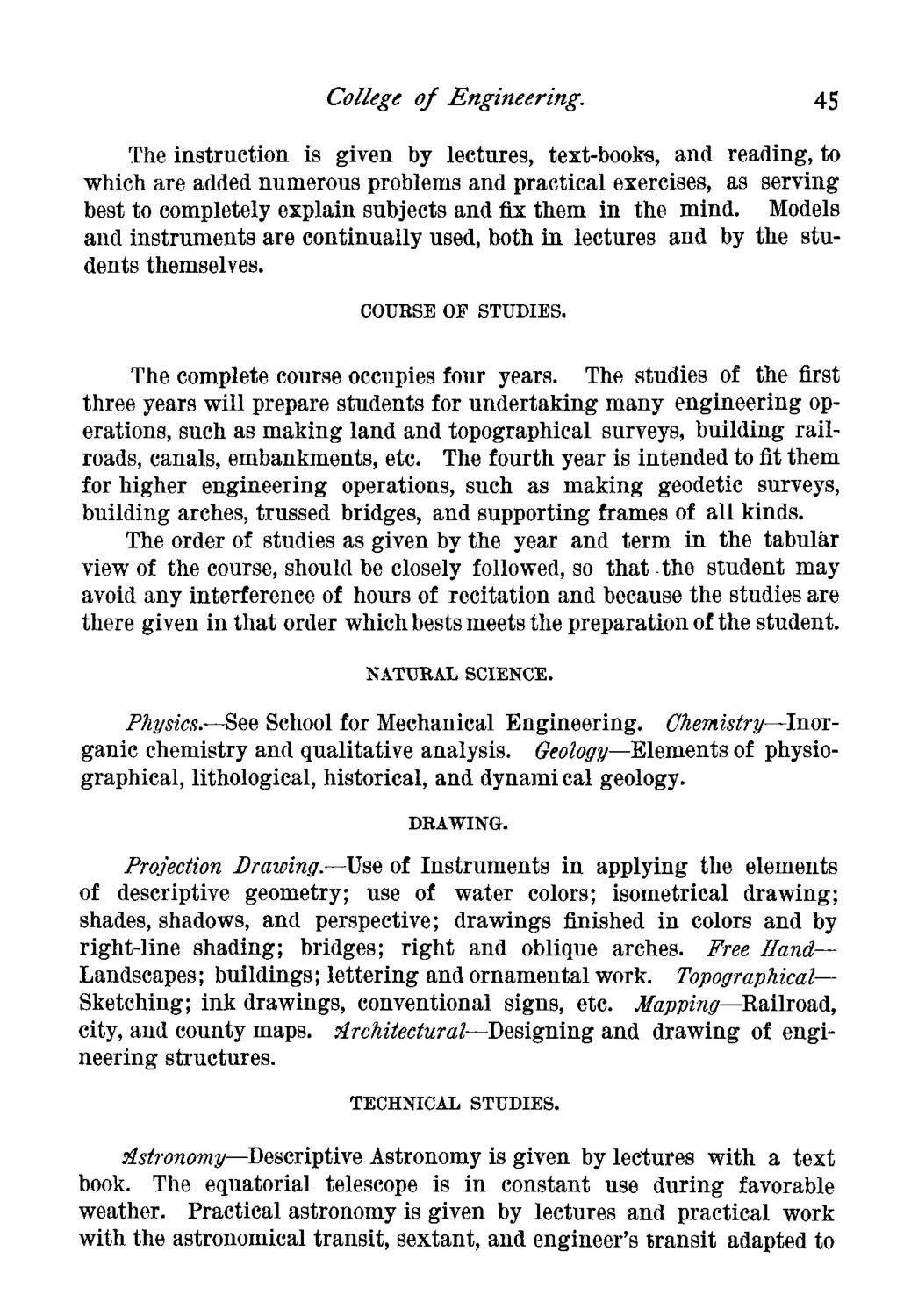| |
| |
Caption: Course Catalog - 1881-1882
This is a reduced-resolution page image for fast online browsing.

EXTRACTED TEXT FROM PAGE:
College of Engineering. 45 The instruction is given by lectures, text-books, and reading, to which are added numerous problems and practical exercises, as serving best to completely explain subjects and fix them in the mind. Models and instruments are continually used, both in lectures and by the students themselves. COURSE OF STUDIES. The complete course occupies four years. The studies of the first three years will prepare students for undertaking many engineering operations, such as making land and topographical surveys, building railroads, canals, embankments, etc. The fourth year is intended to fit them for higher engineering operations, such as making geodetic surveys, building arches, trussed bridges, and supporting frames of all kinds. The order of studies as given by the year and term in the tabular view of the course, should be closely followed, so that the student may avoid any interference of hours of recitation and because the studies are there given in that order which bests meets the preparation of the student. NATURAL SCIENCE. Physics.—See School for Mechanical Engineering. Chemistry—Inorganic chemistry and qualitative analysis. Geology—Elements of physiographical, lithological, historical, and dynami cal geology. DRAWING. Projection Drawing.—Use of Instruments in applying the elements of descriptive geometry; use of water colors; isometrical drawing; shades, shadows, and perspective; drawings finished in colors and by right-line shading; bridges; right and oblique arches. Free Hand— Landscapes; buildings; lettering and ornamental work. Topographical— Sketching; ink drawings, conventional signs, etc. Map-ping—Railroad, city, and county maps. Architectural—Designing and drawing of engineering structures. TECHNICAL STUDIES. Astronomy—Descriptive Astronomy is given by lectures with a text book. The equatorial telescope is in constant use during favorable weather. Practical astronomy is given by lectures and practical work with the astronomical transit, sextant, and engineer's transit adapted to
| |